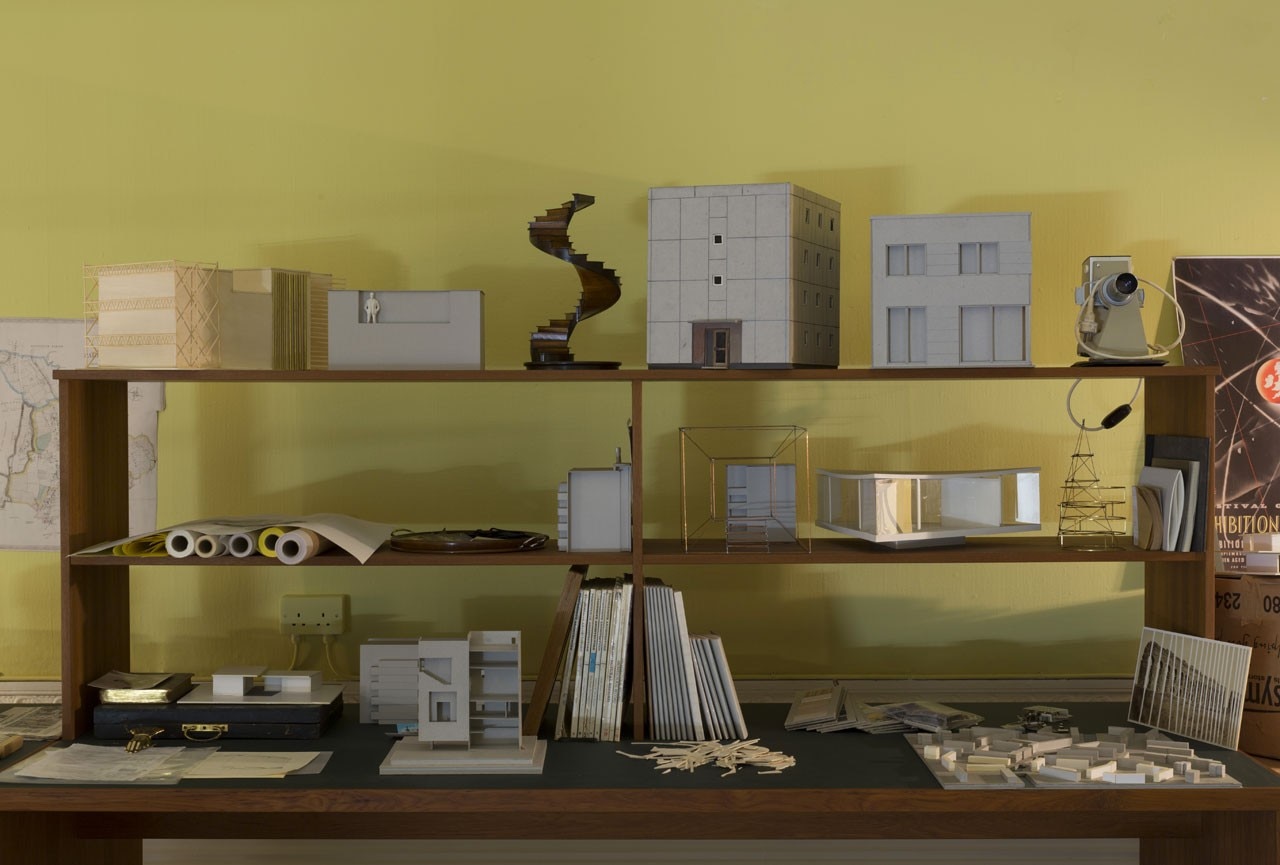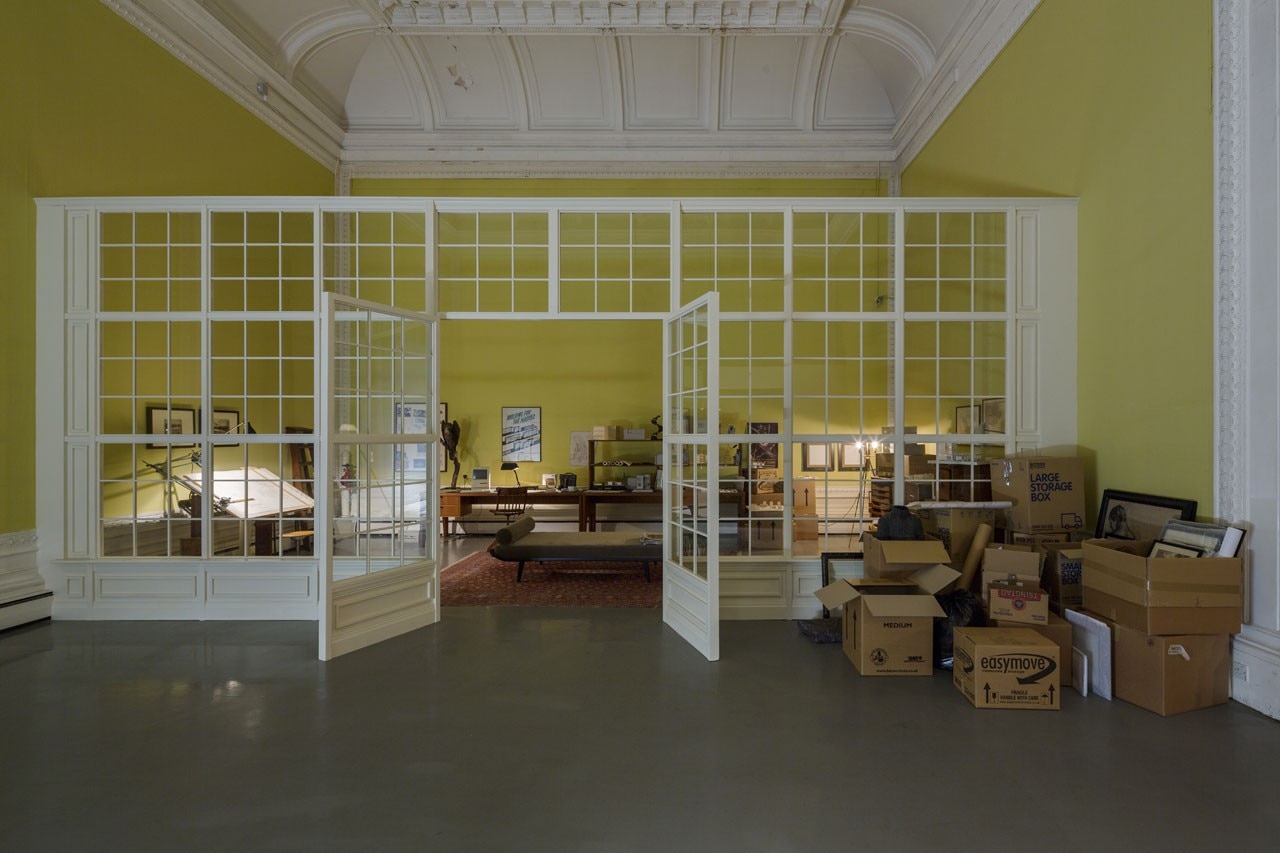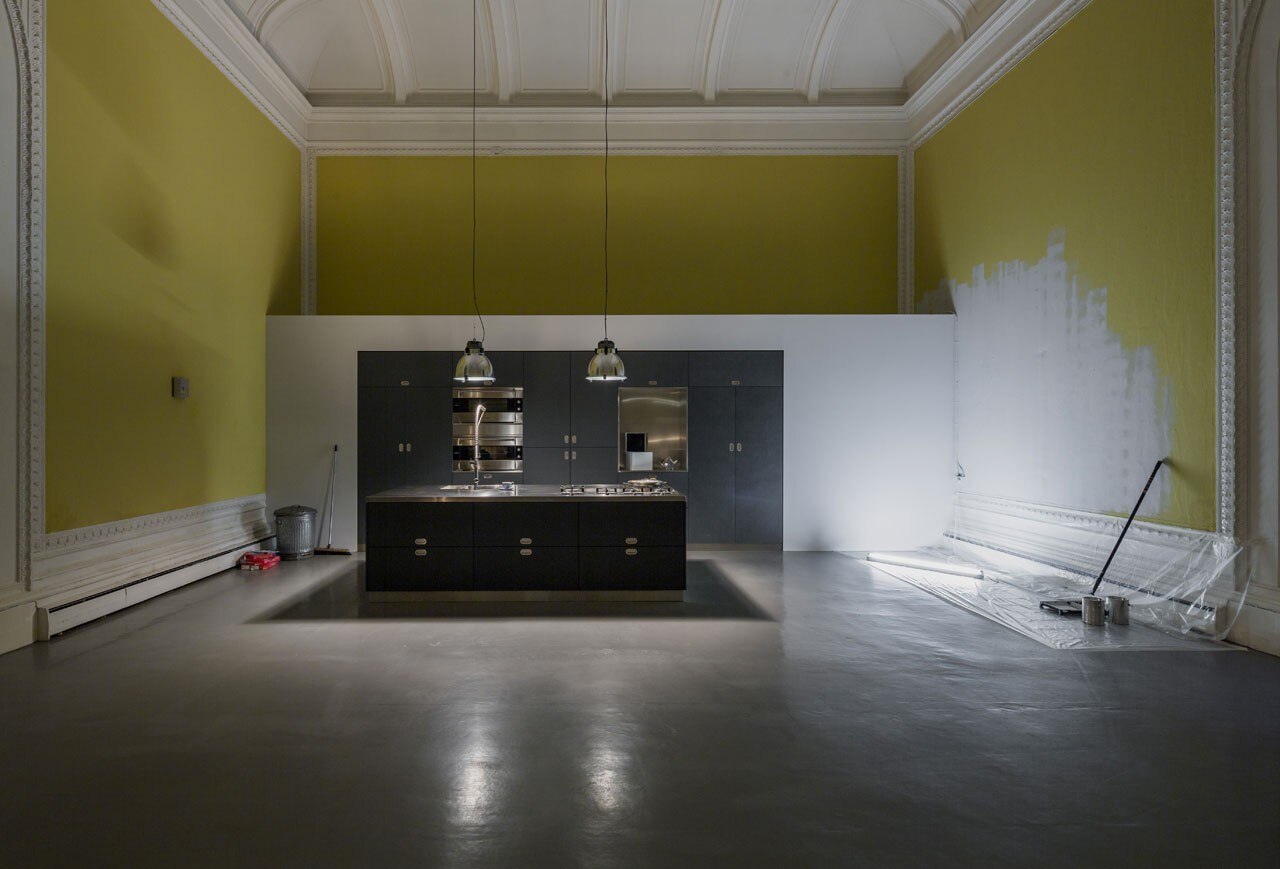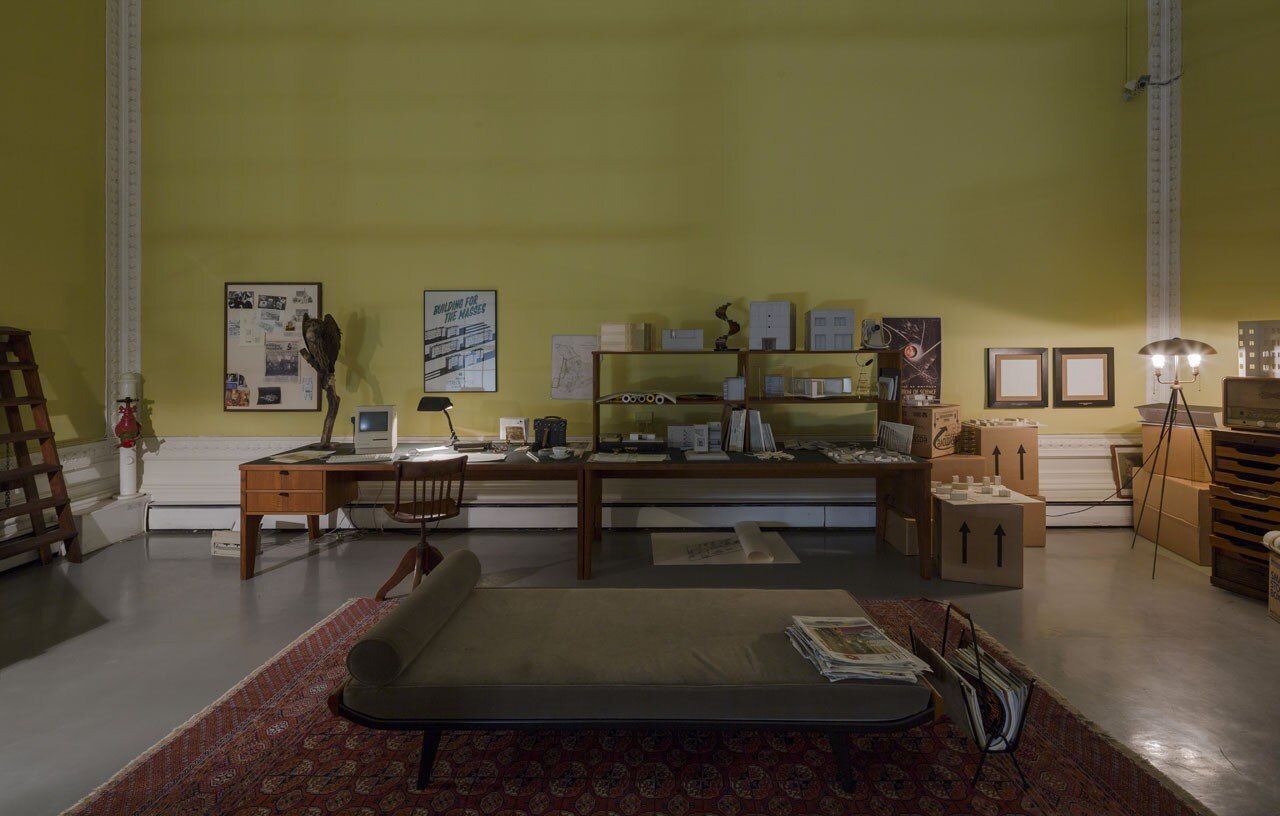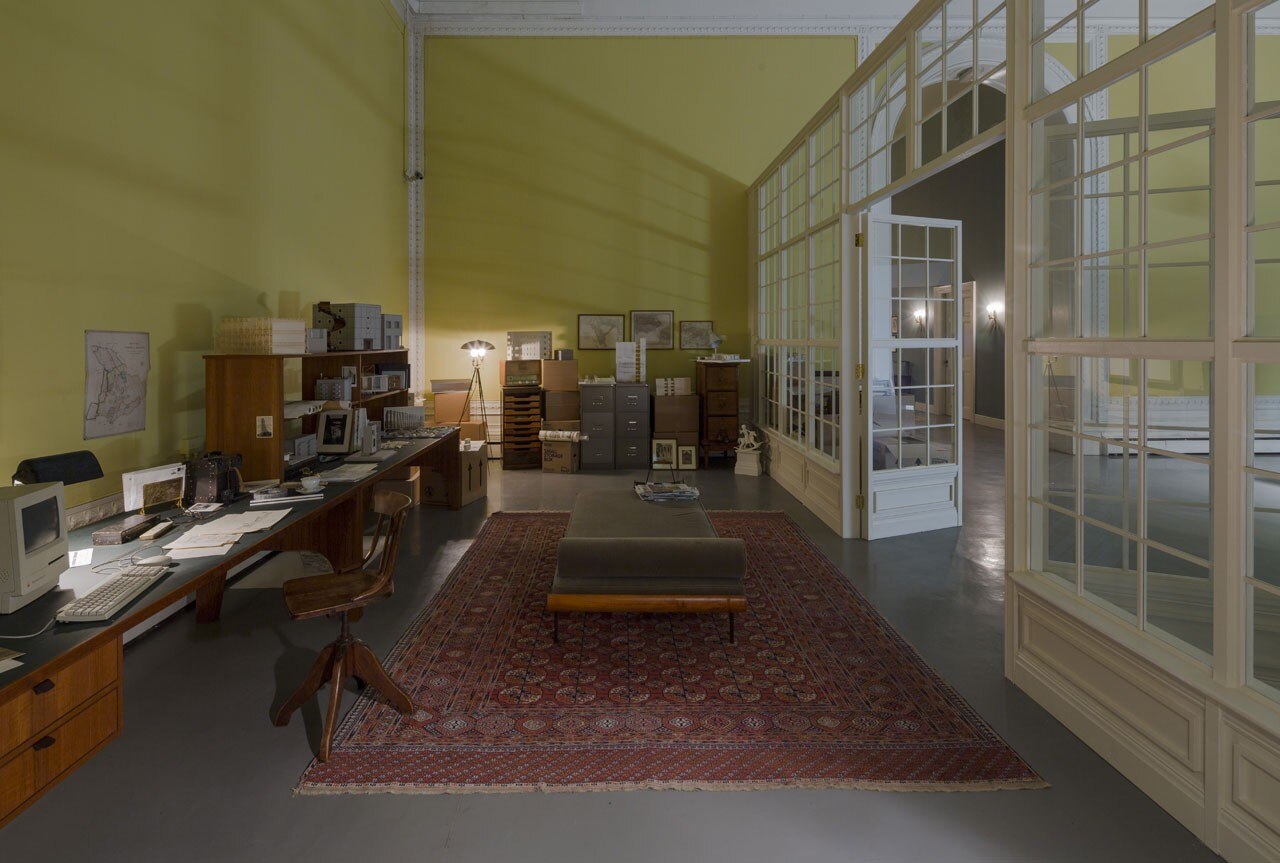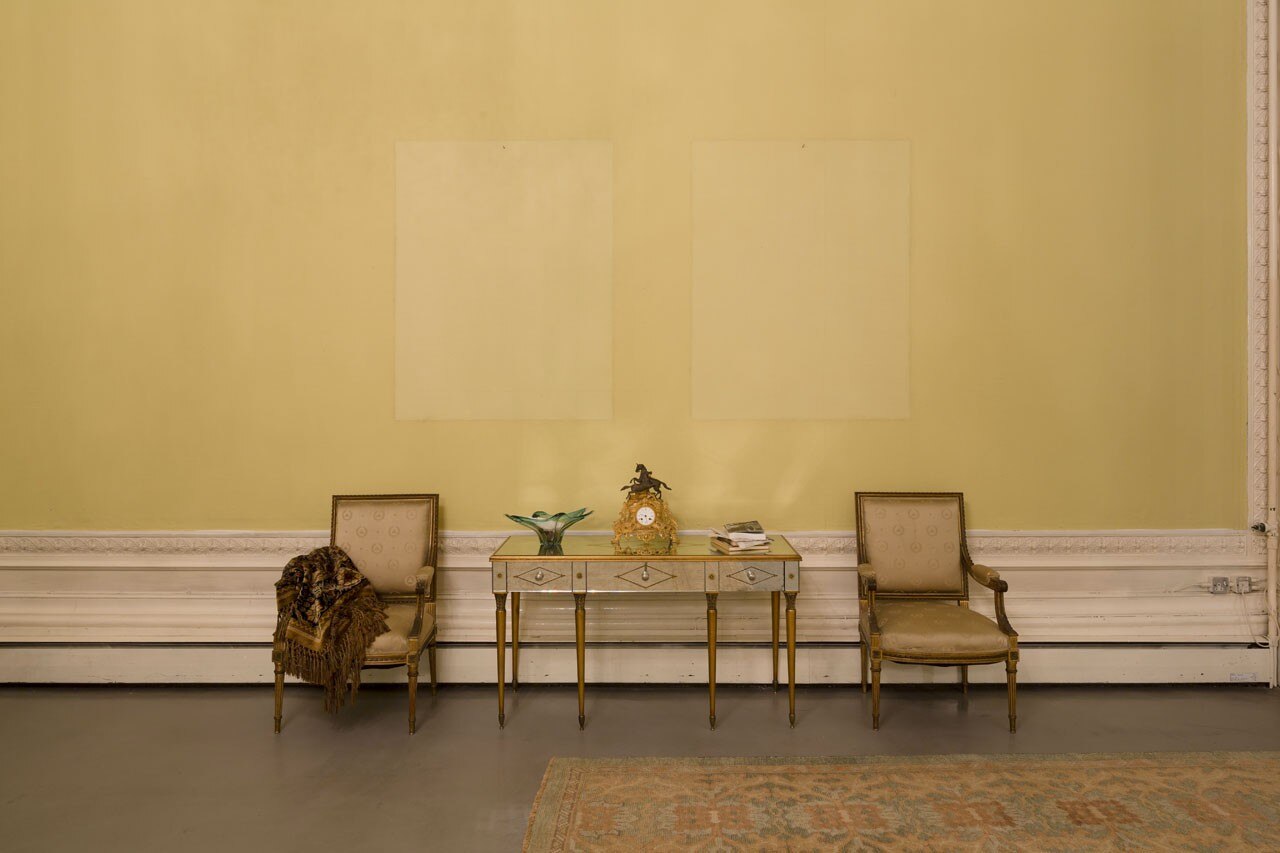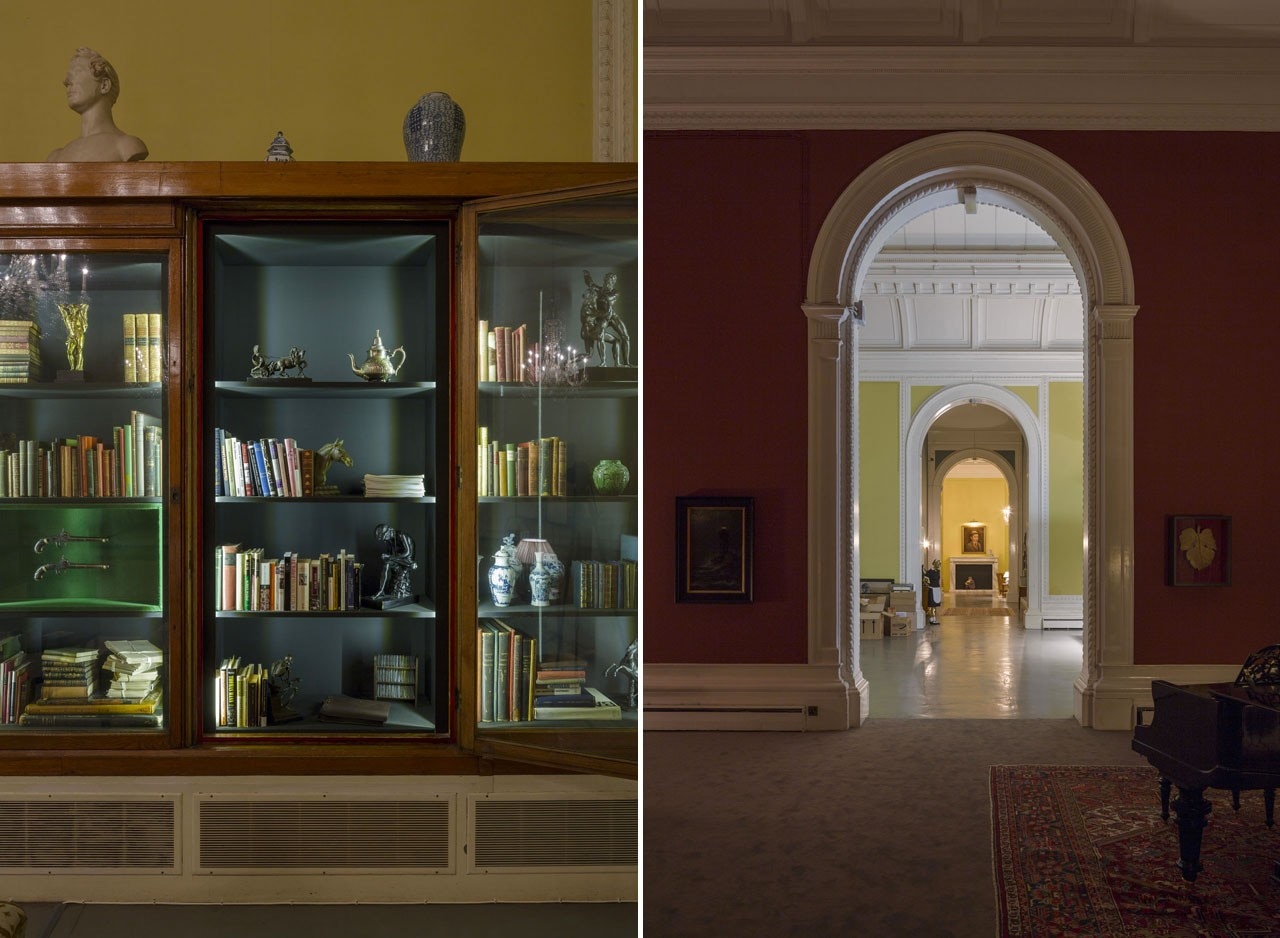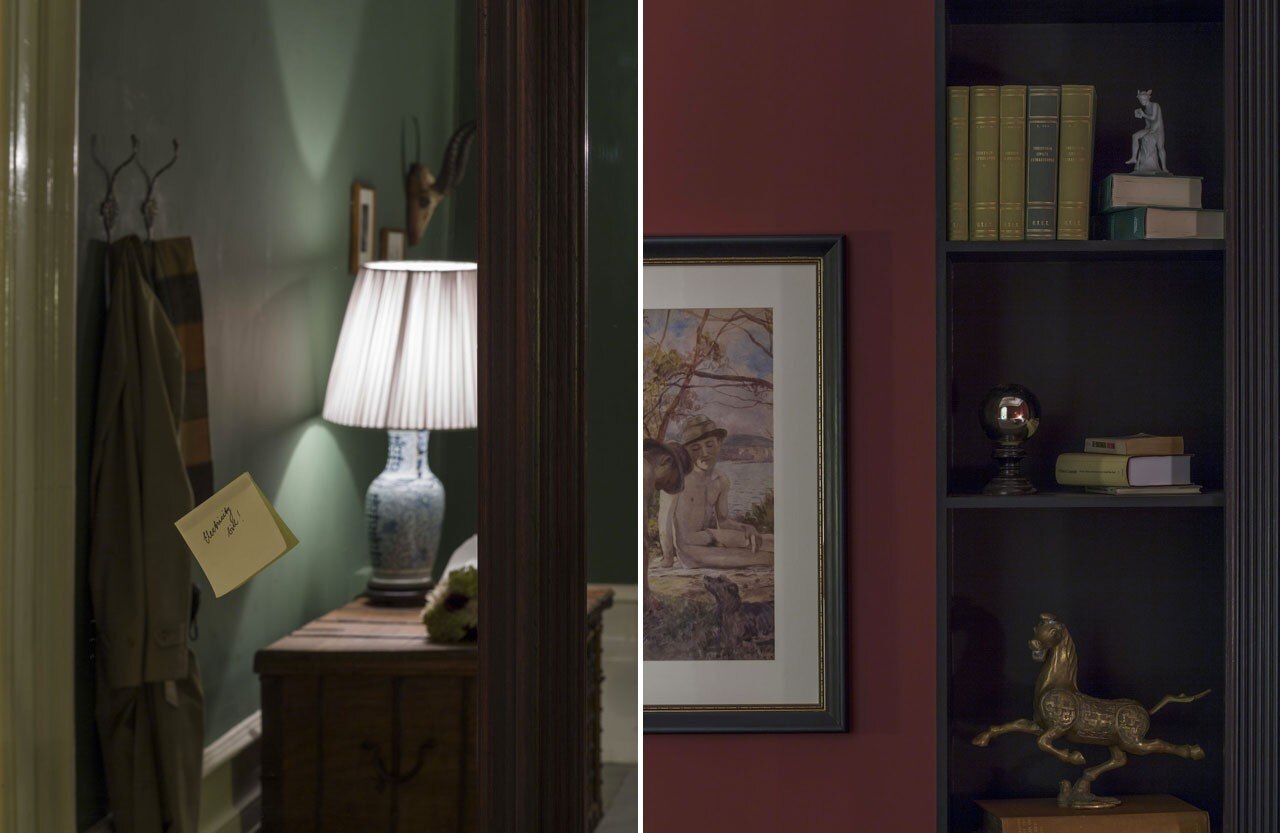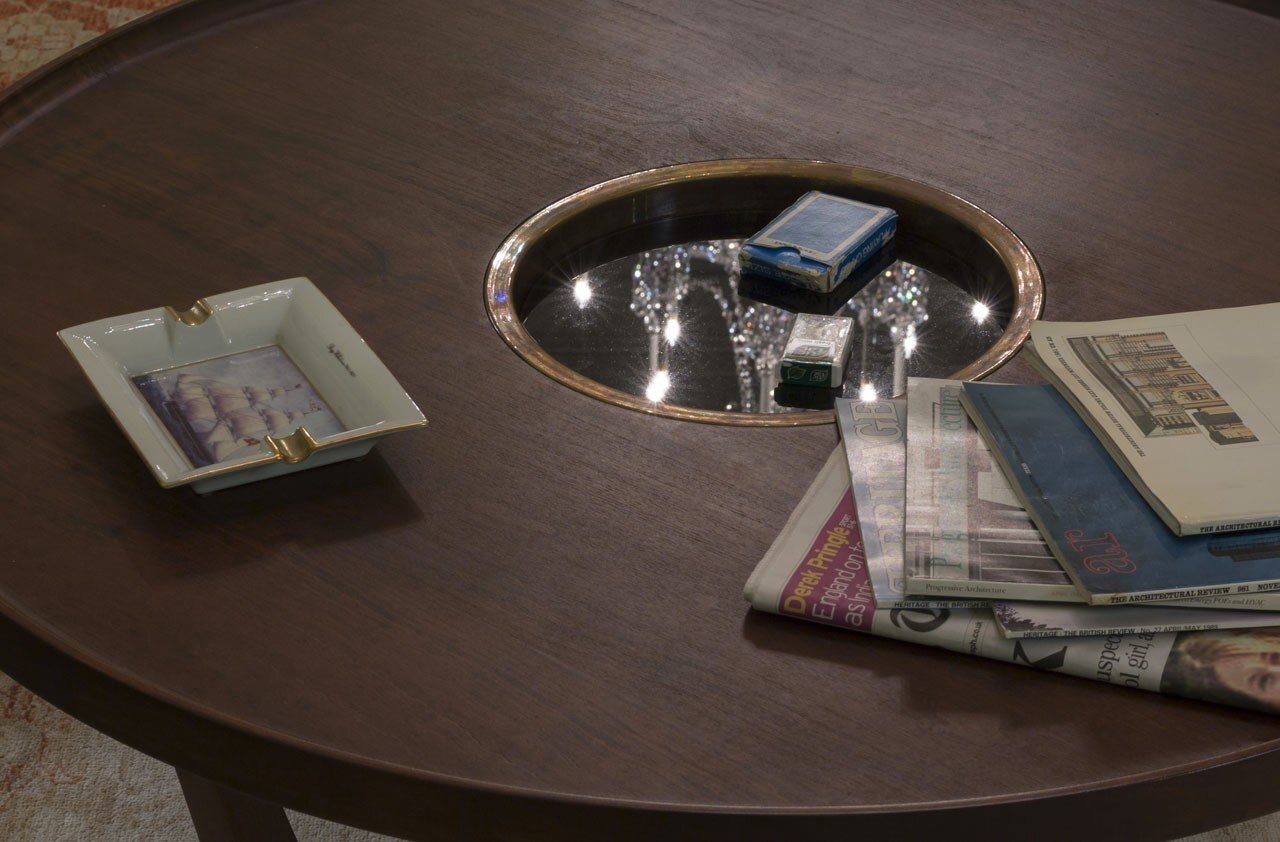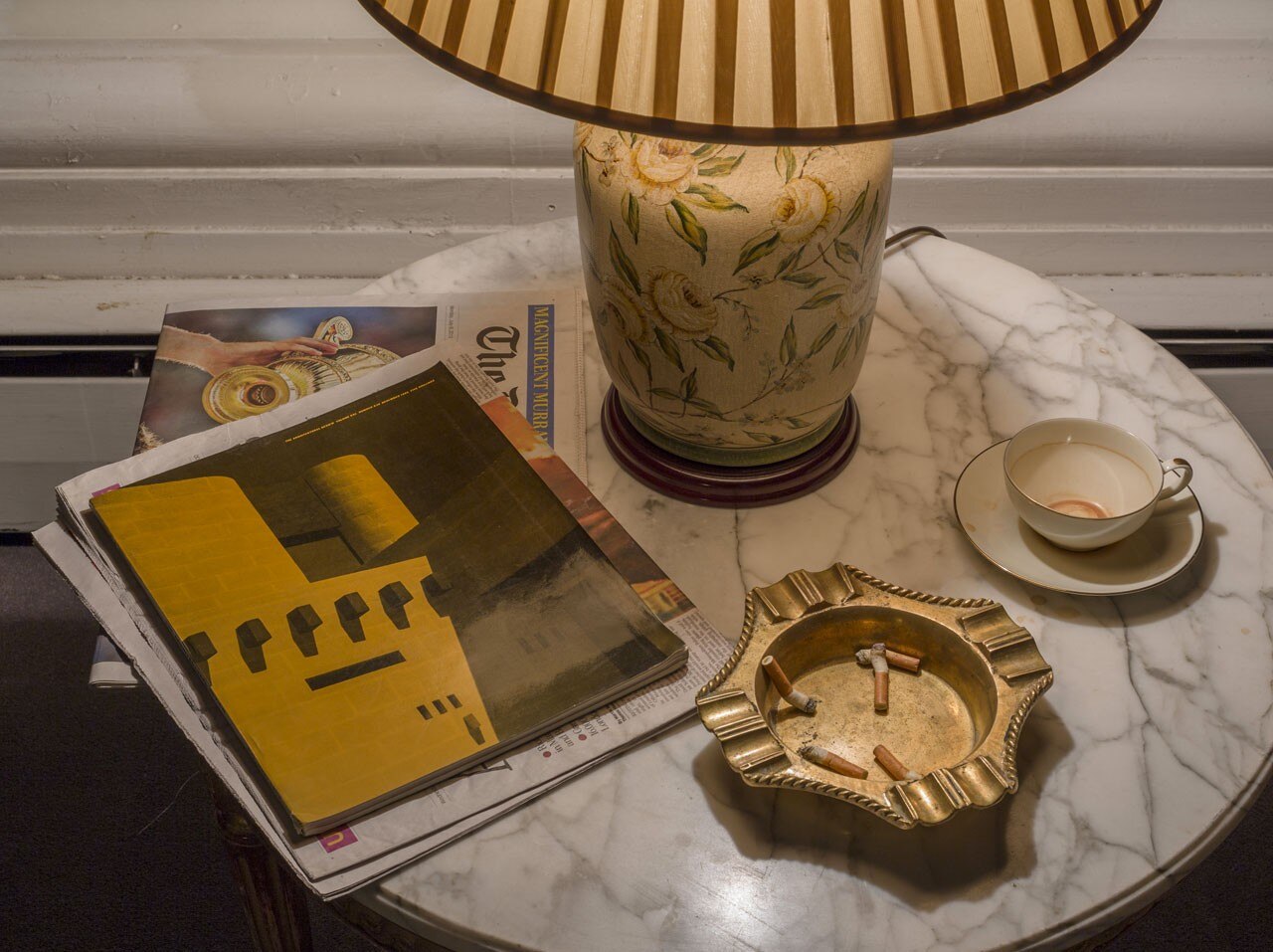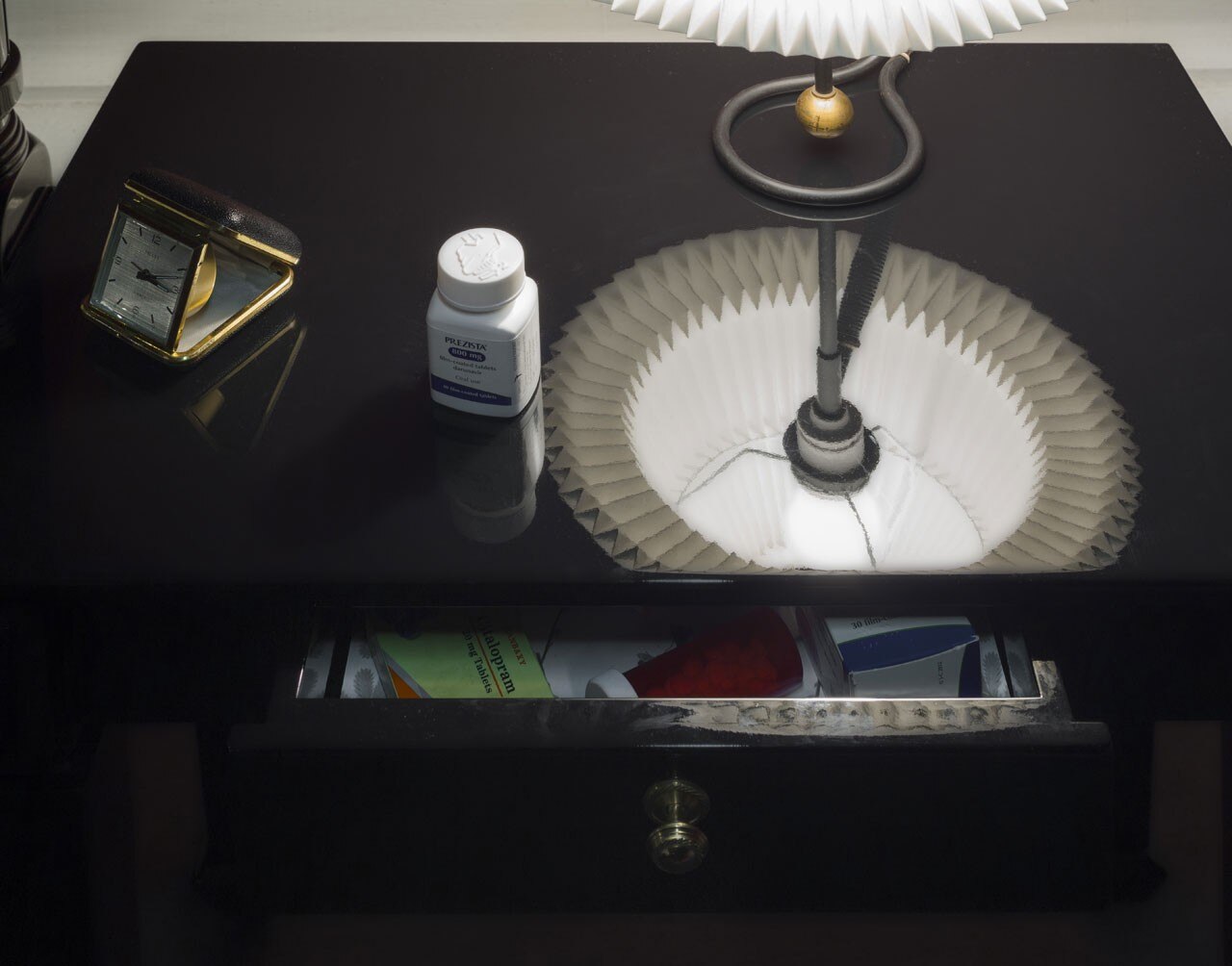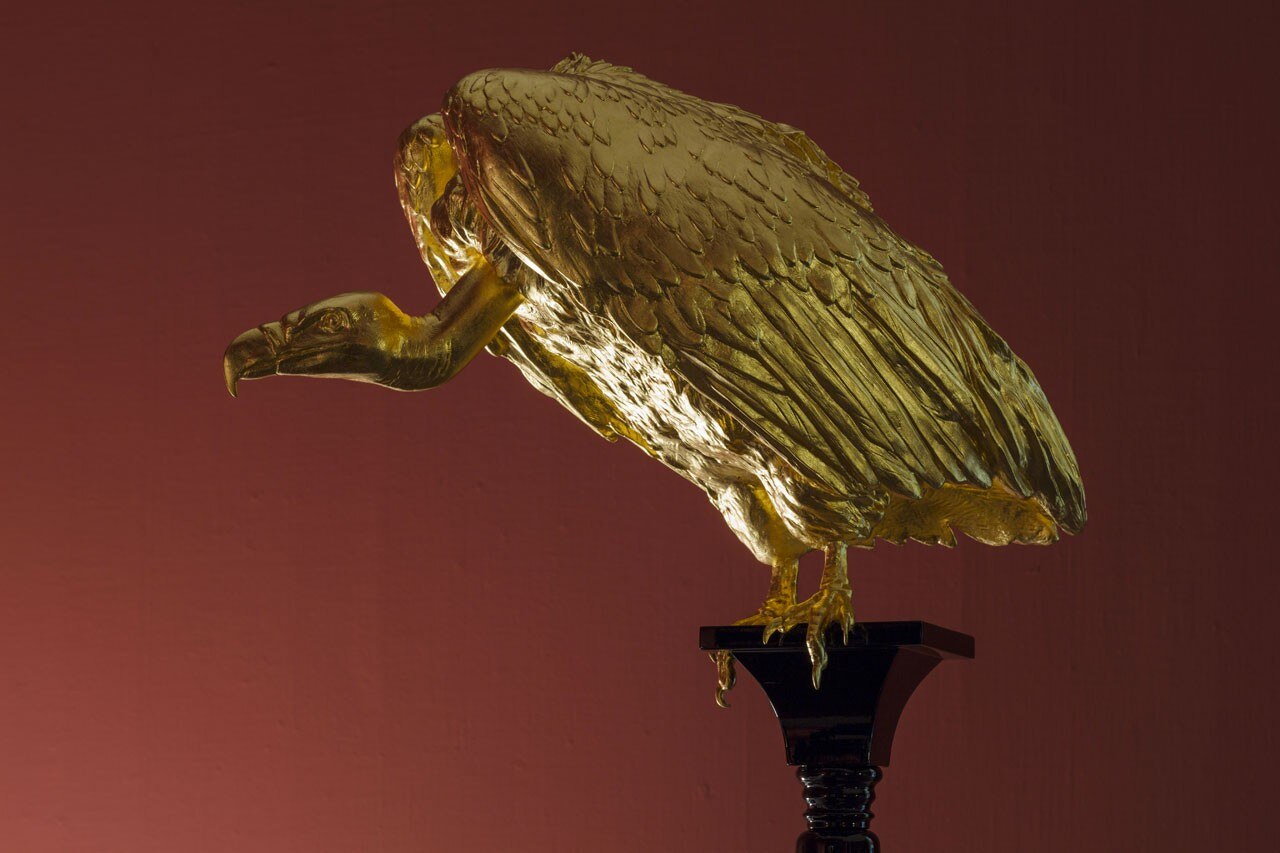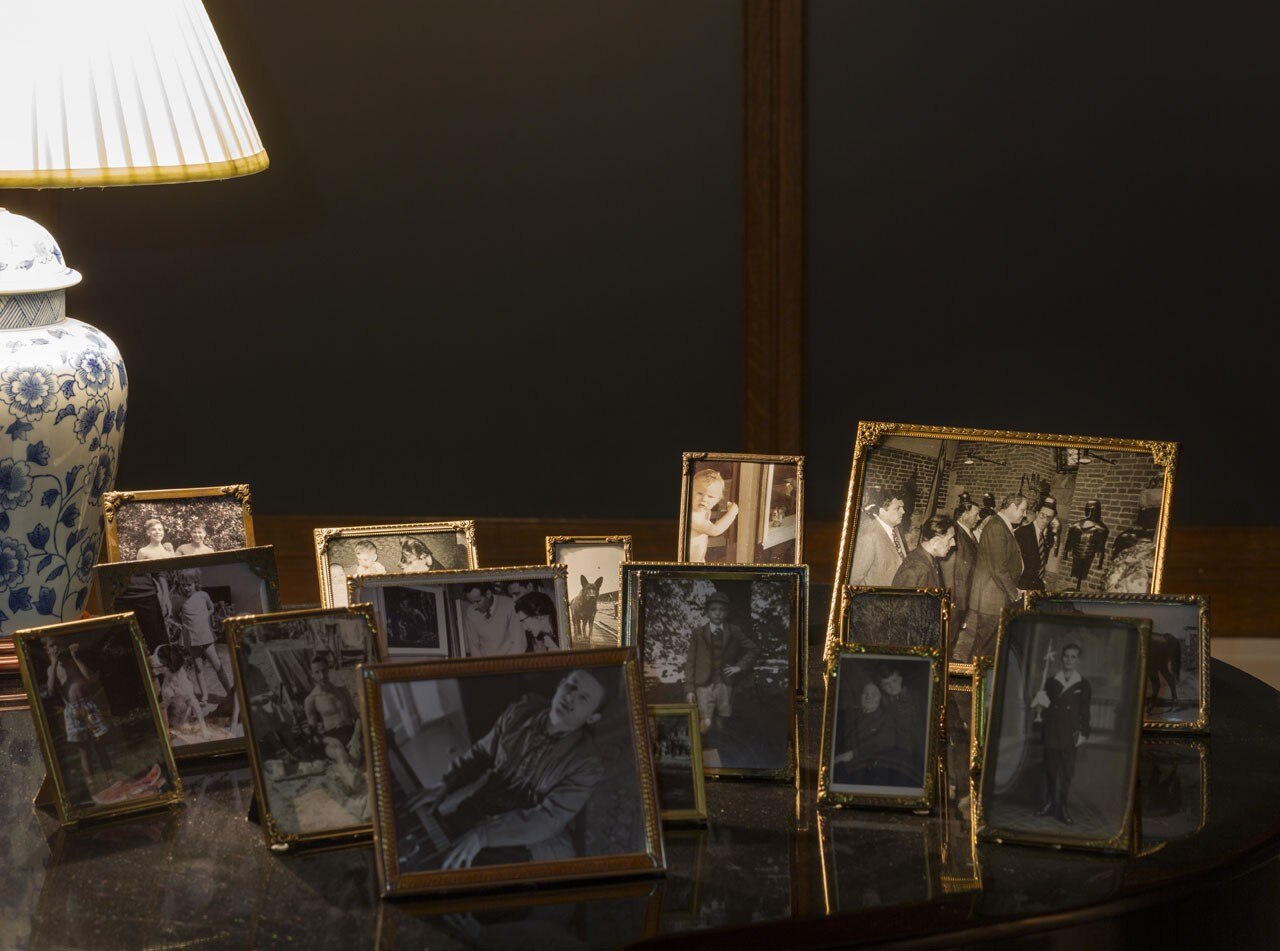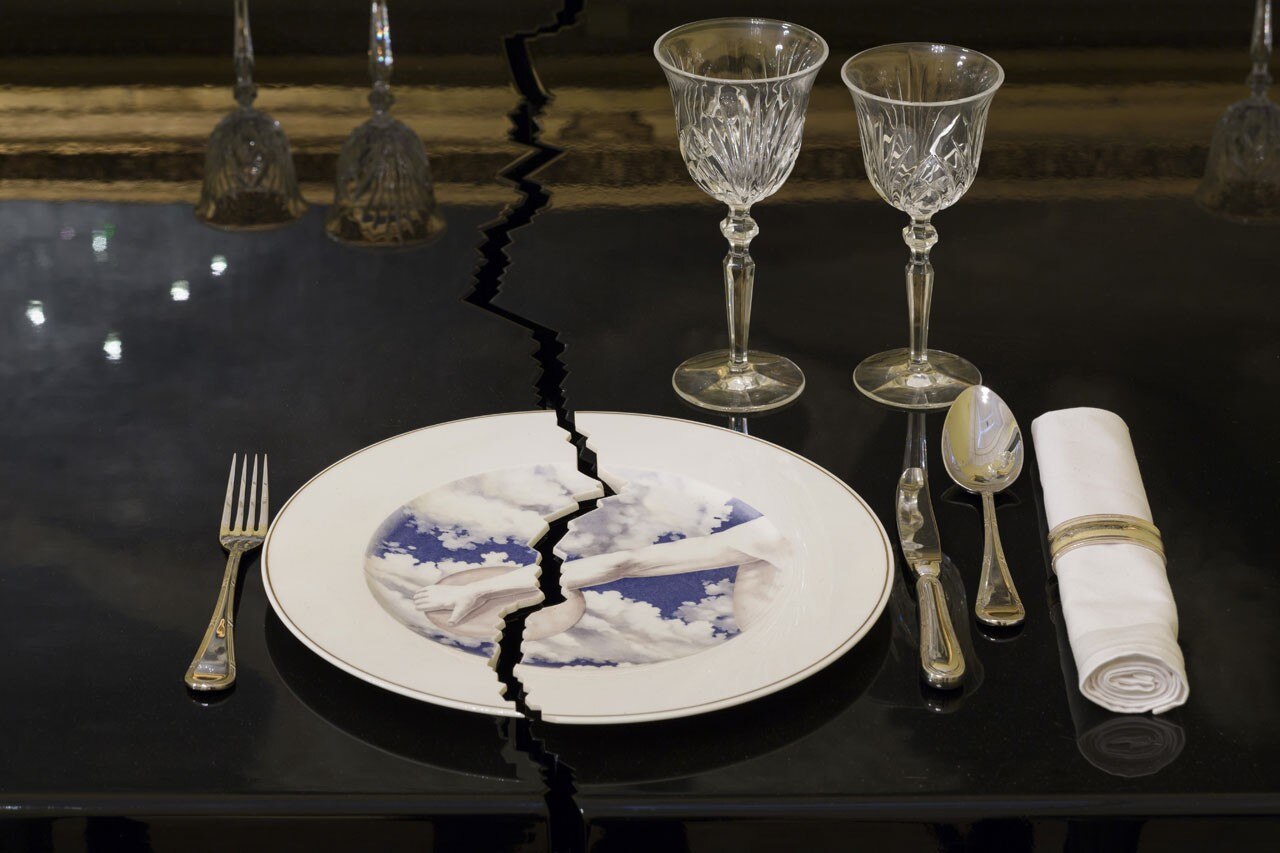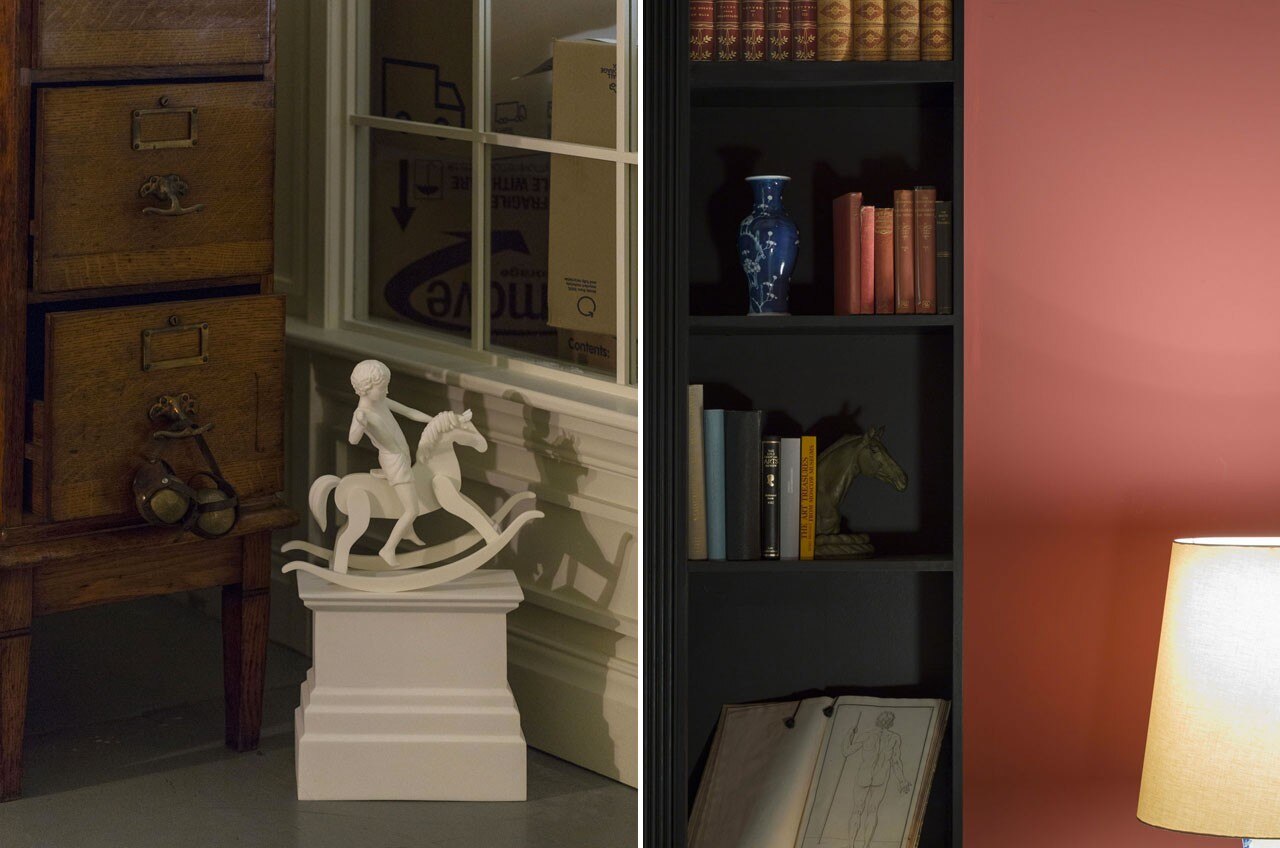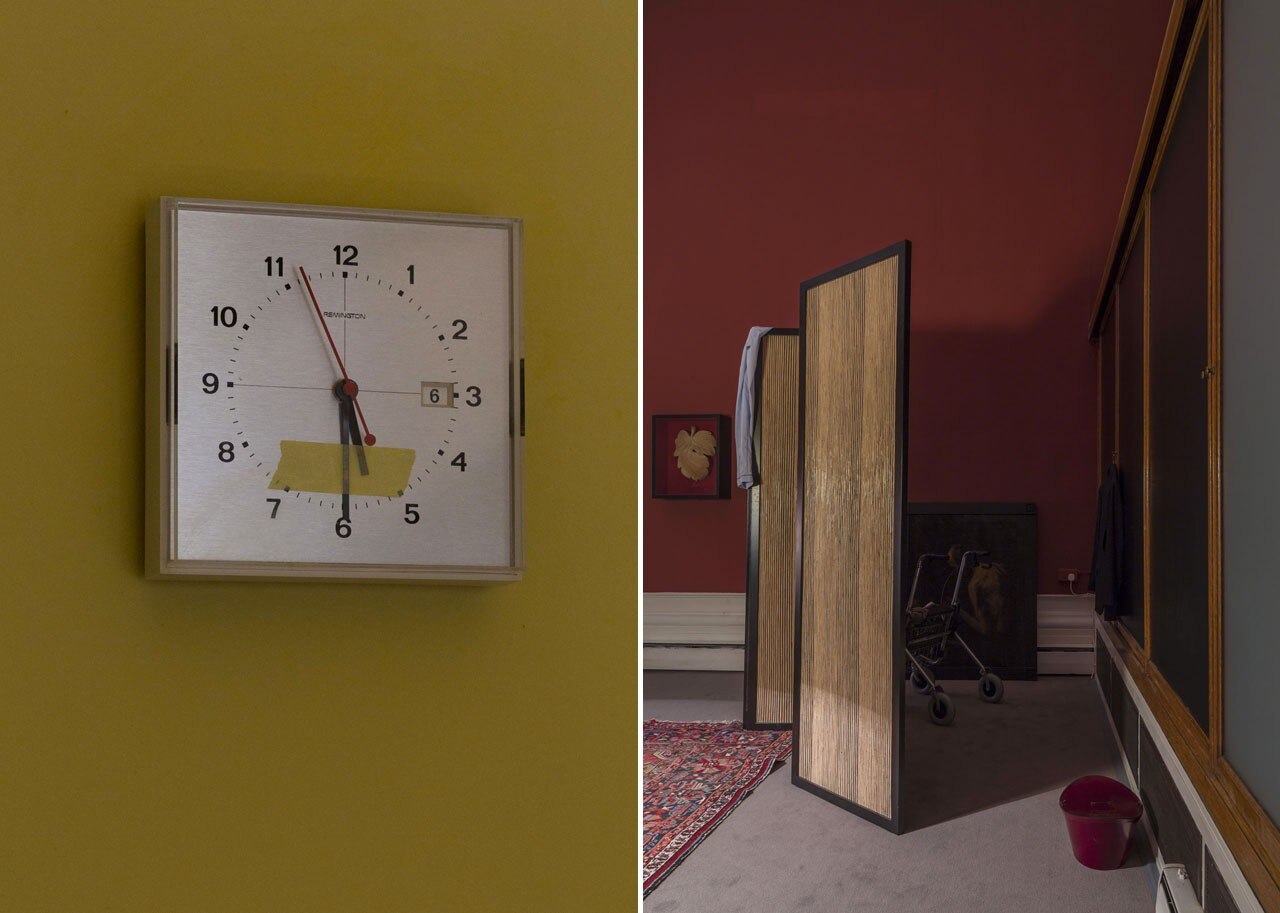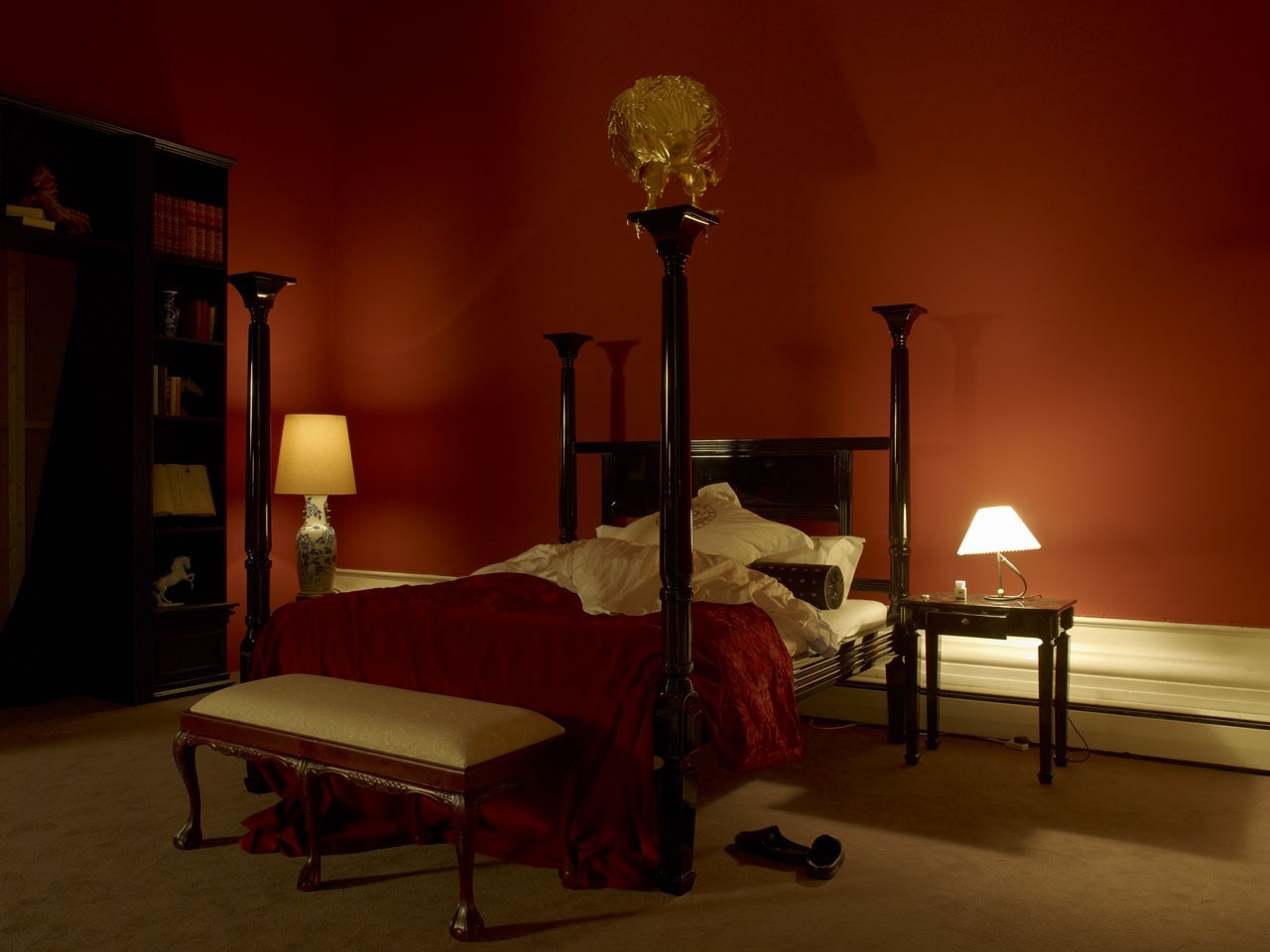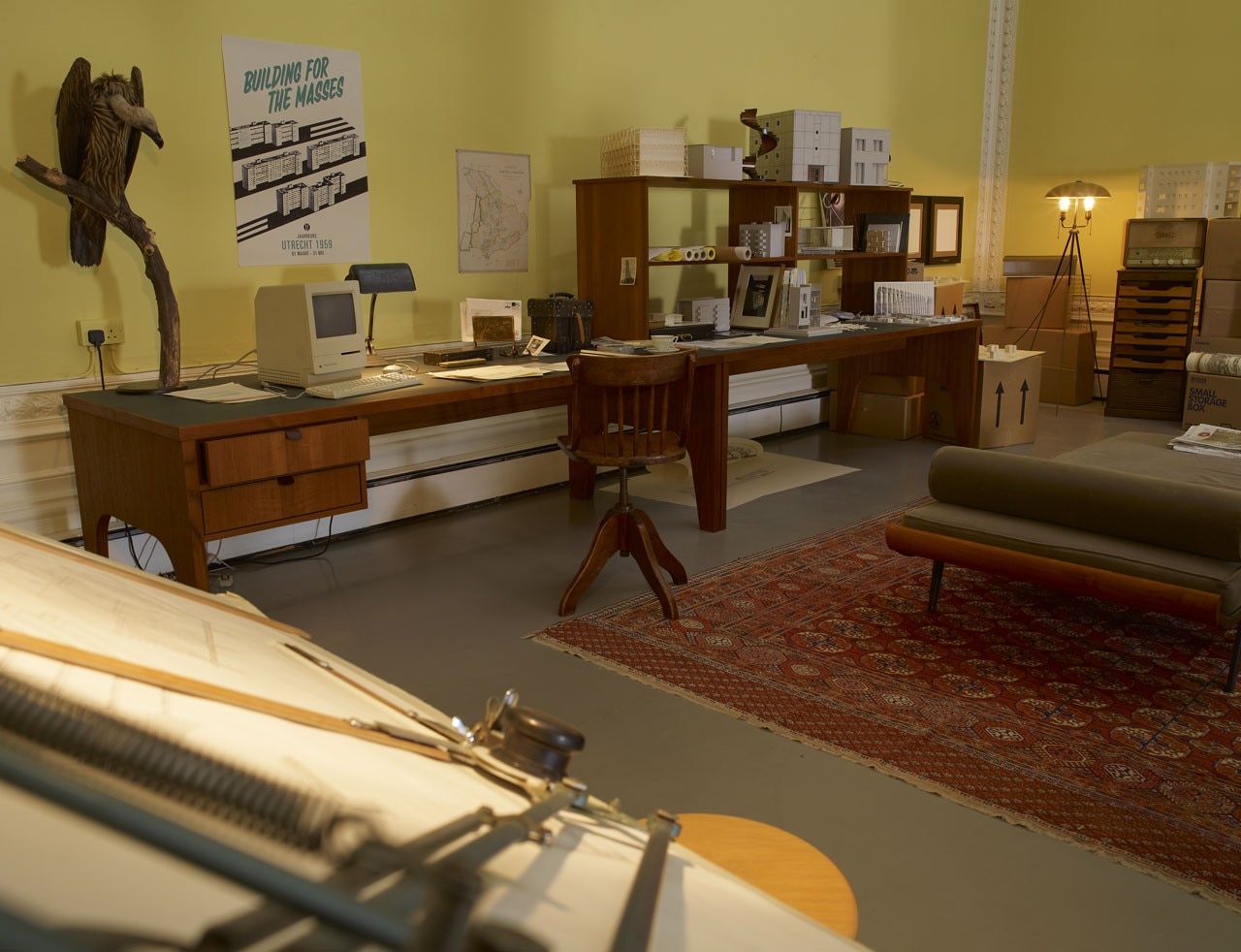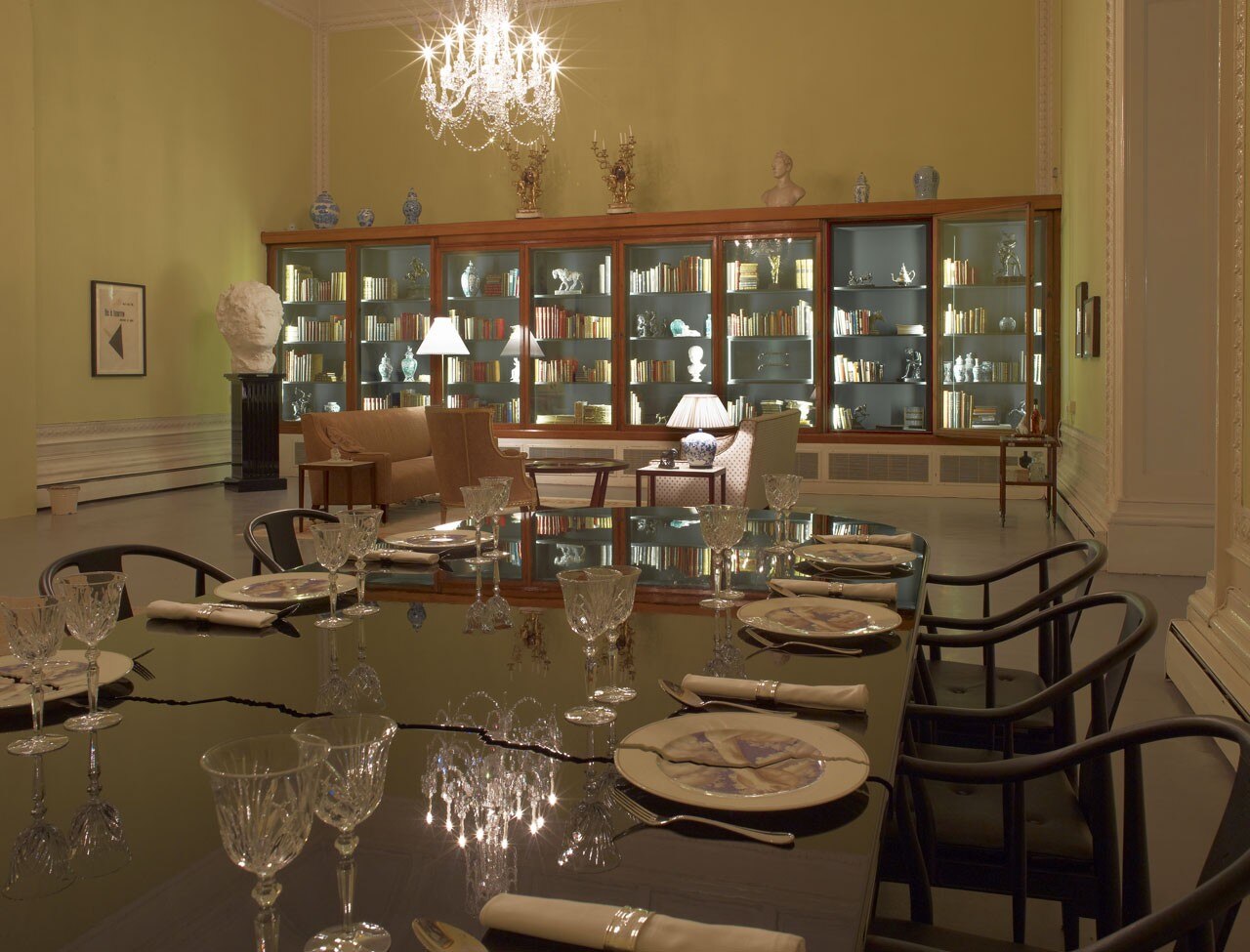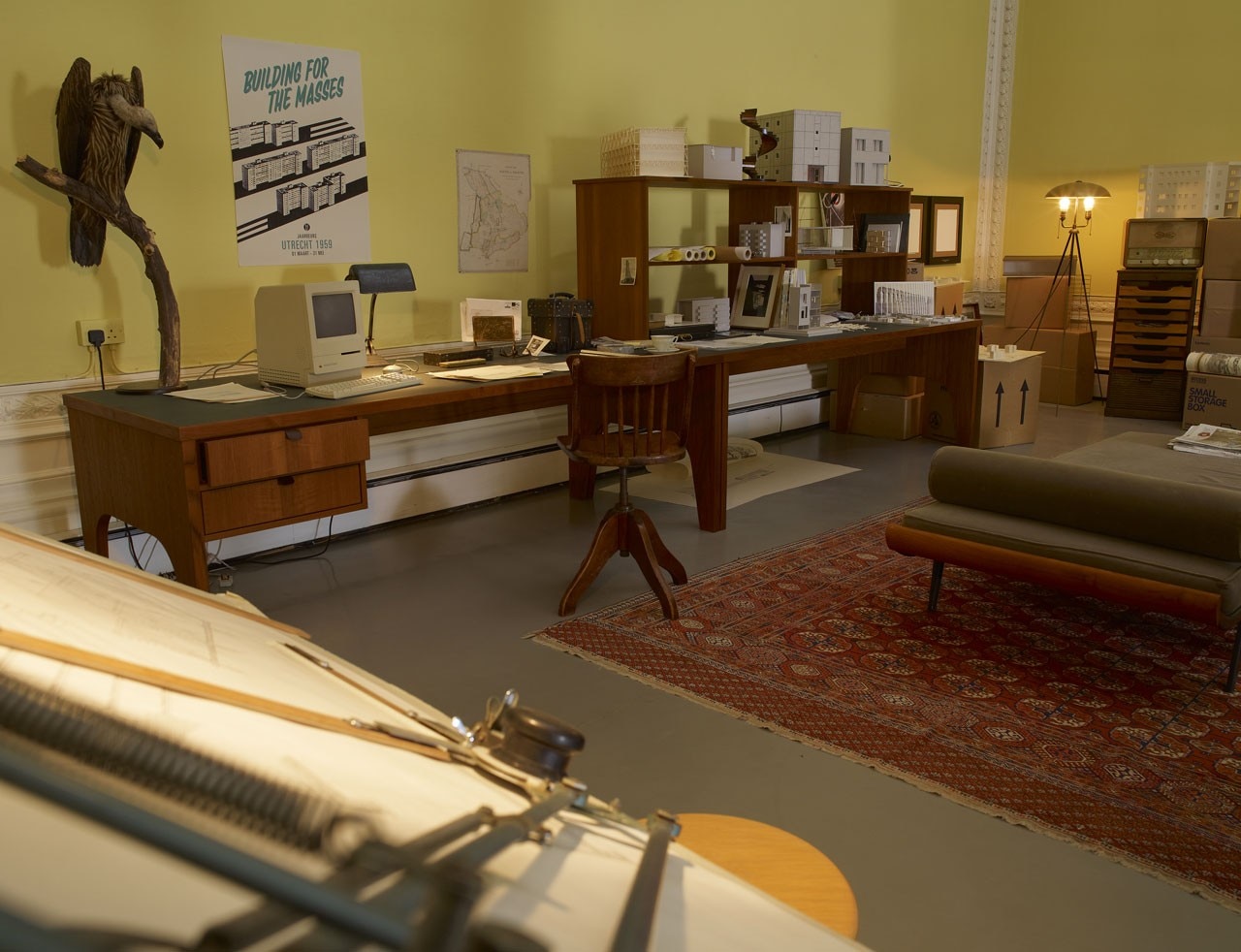
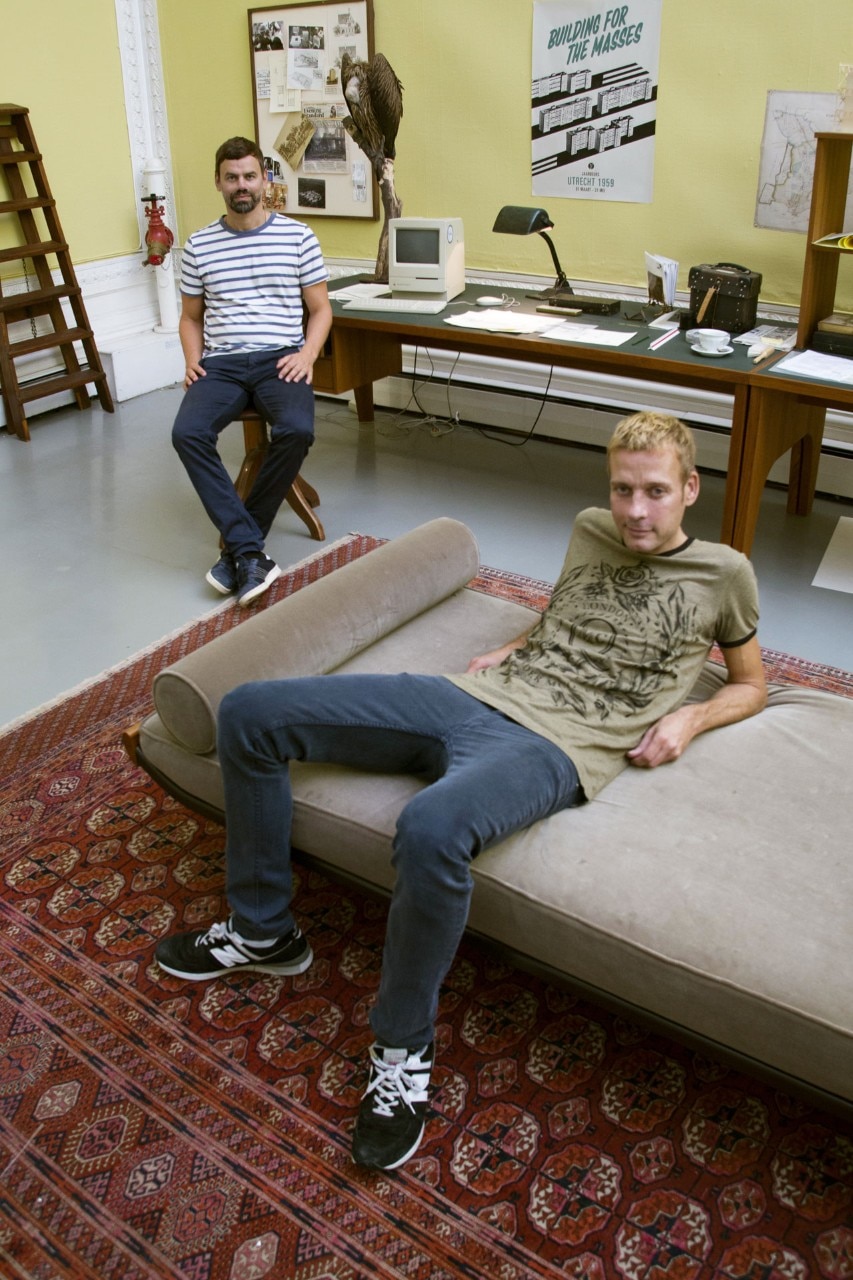
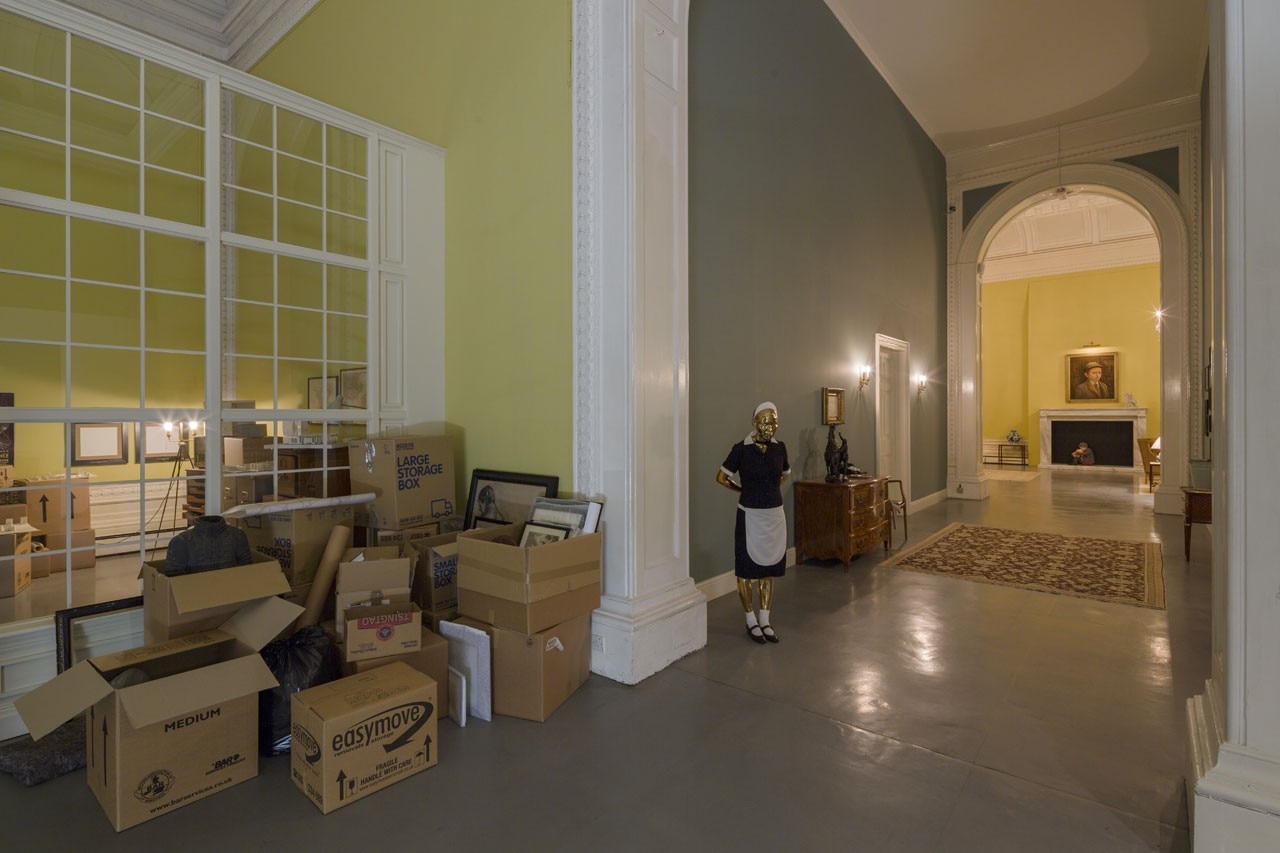
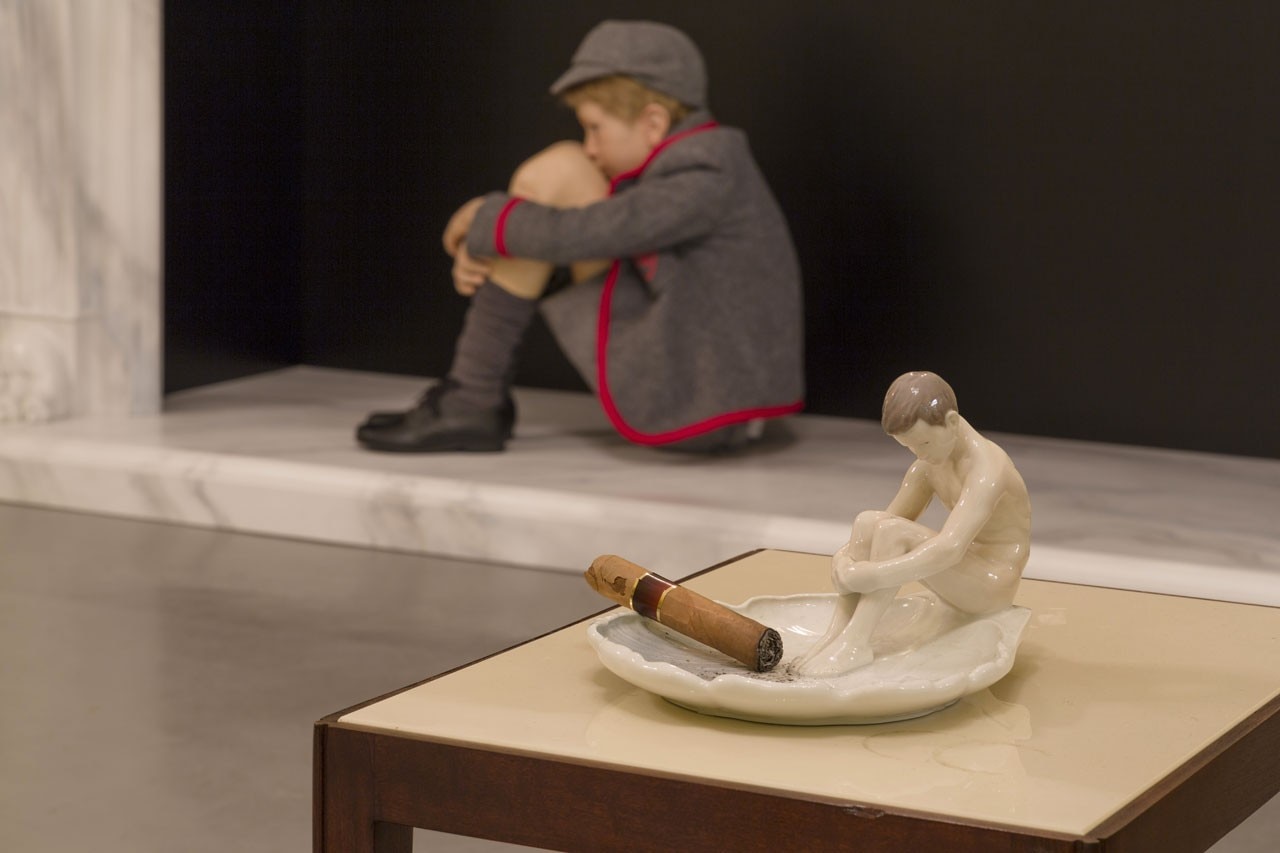
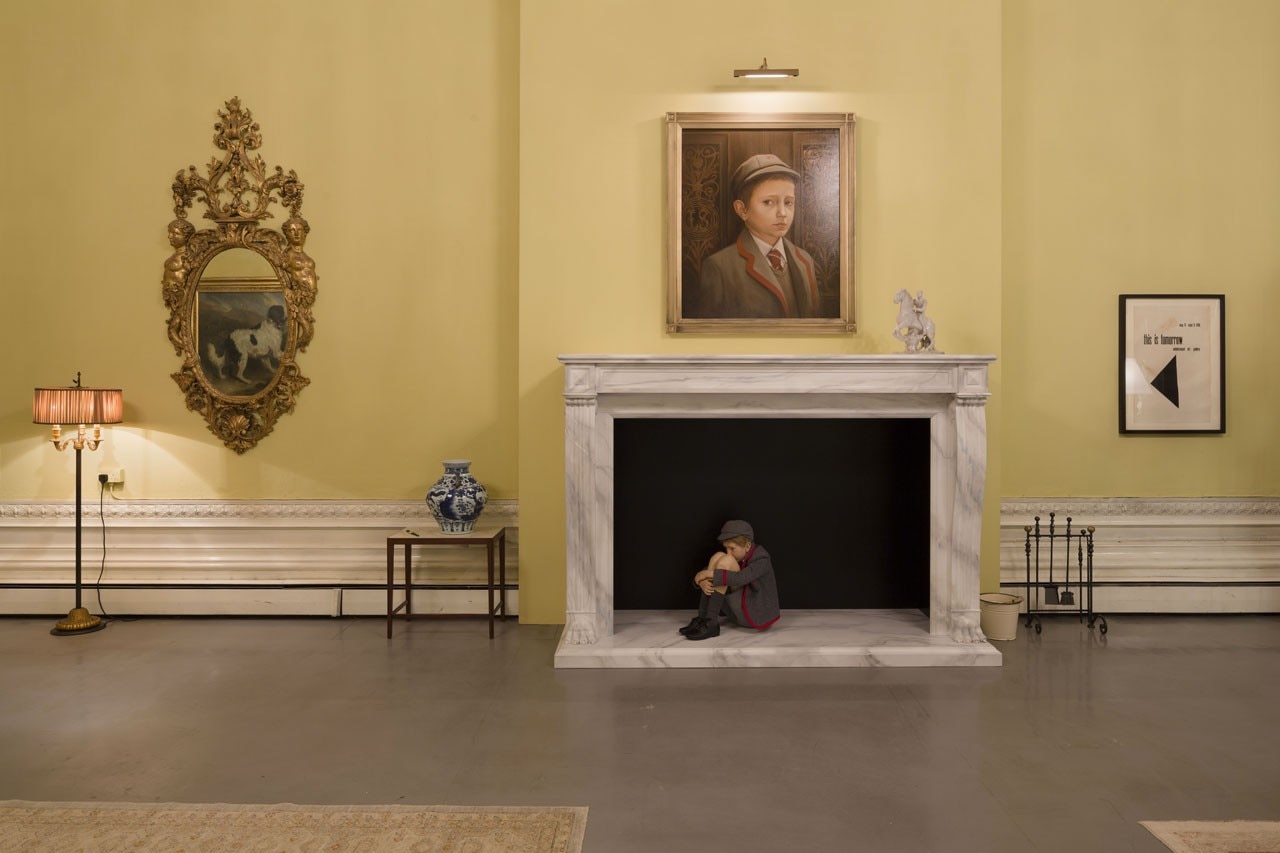
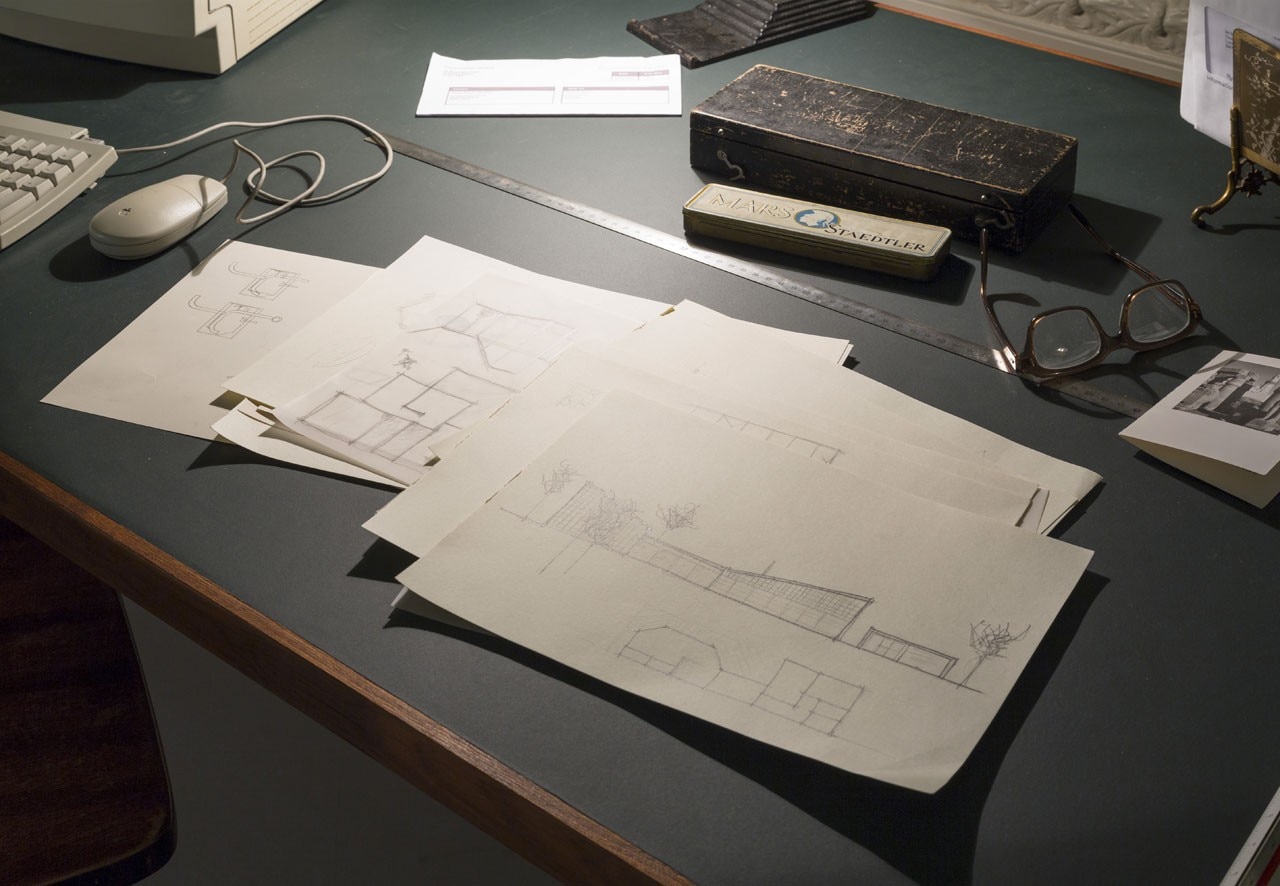
The glass-partitioned study is more modern-facing, with brutalist building models including one that recalls Ernö Goldfinger’s Balfron Tower. A room of works-in-progress, printed matter is stacked on desks while a nineteenth century albumen print of the museum in construction hangs above the drawing board.
As I progress down the tall corridor, I see that the music is coming from a pianist at a grand piano in the scarlet master bedroom. Amid more portraits of a younger self, furthering the Dorian Gray ambiance, come references to the artists’ past sculptures – a rocking horse figurine of their Fourth Plinth in Trafalgar Square commission, and a golden vulture, The Critic, which peers over the dark wood bed. Part of the ‘Powerless Structures’ series, these pieces lead me to wonder what level of institutional critique the artists aim to serve here.
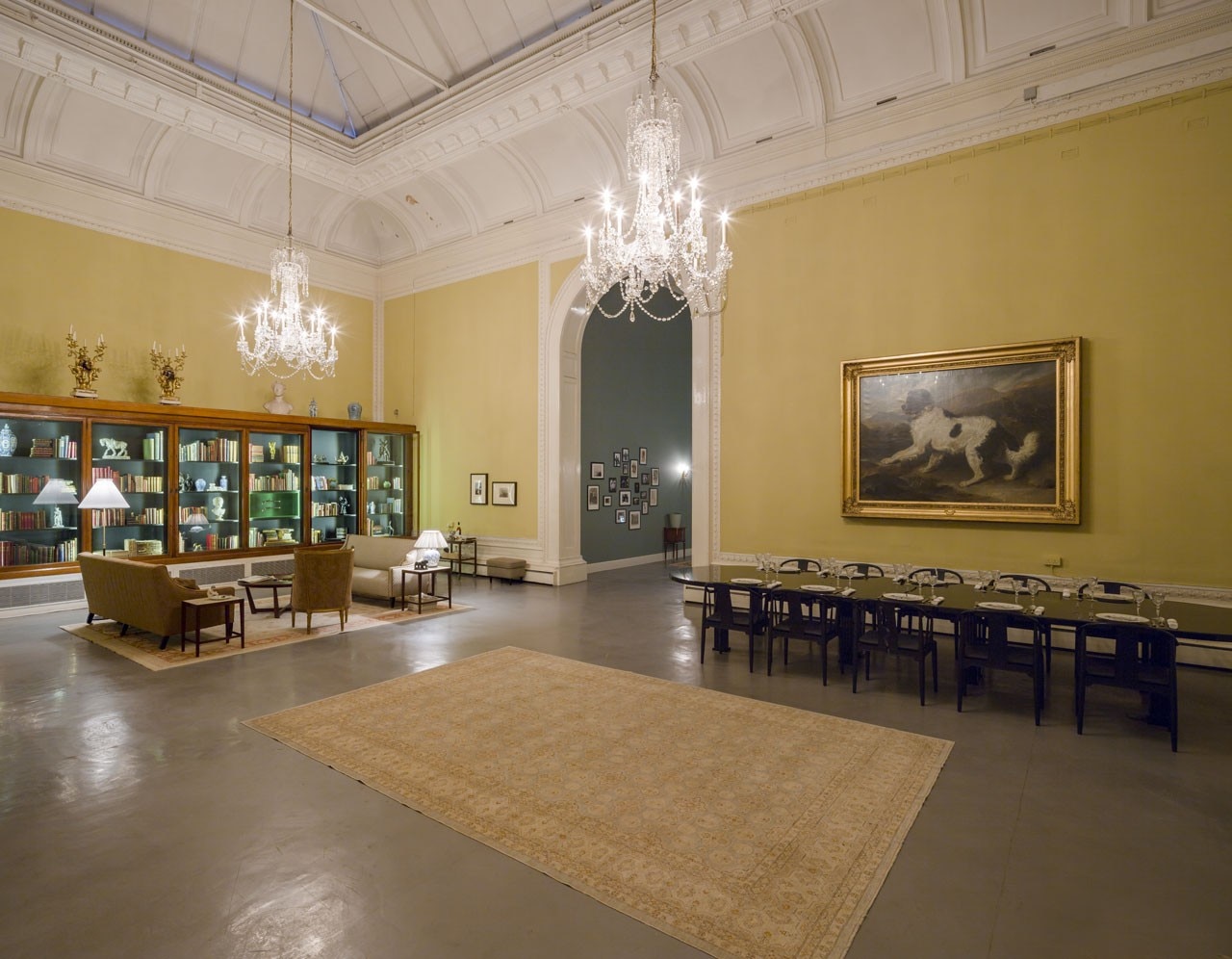
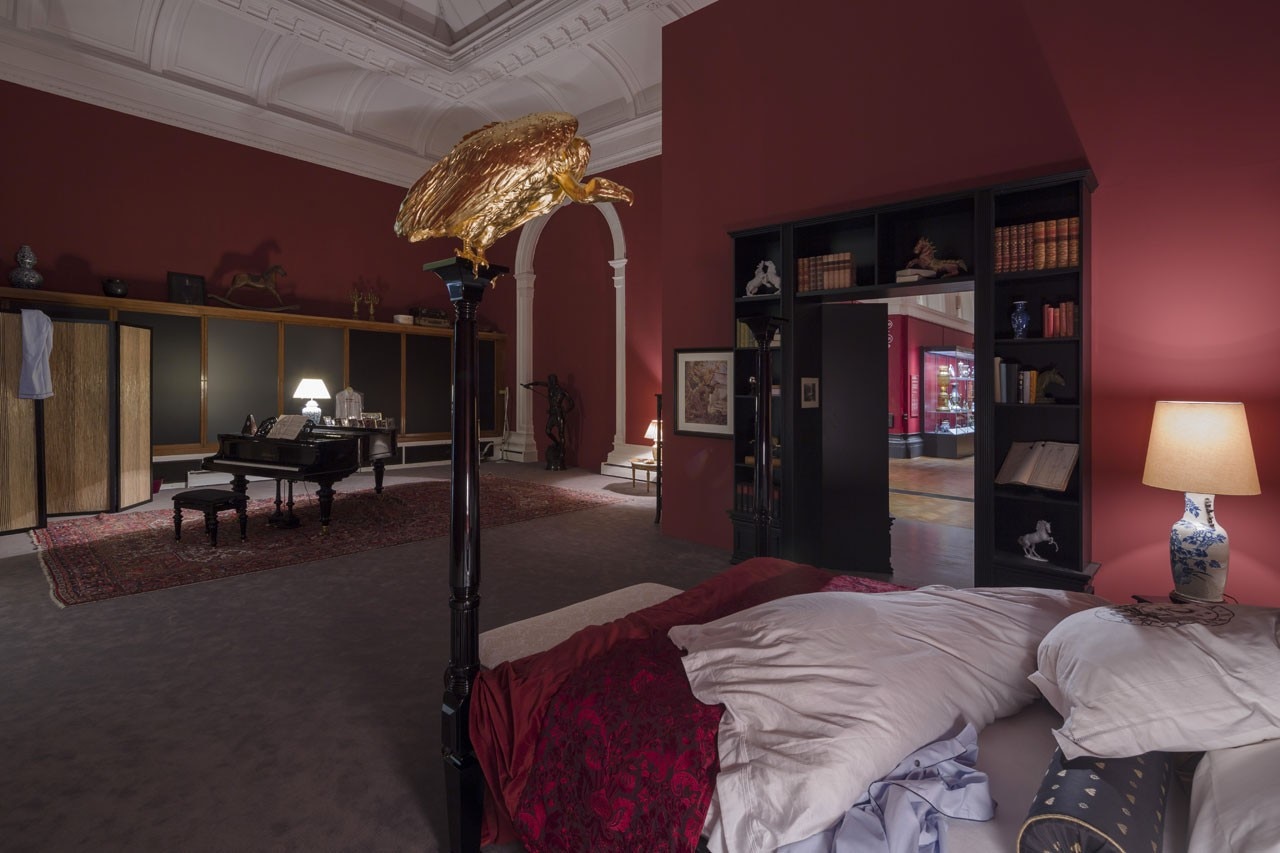
Inside, the installation recontextualises the experience of the museum to supply it with a lingering sub-plot – the behind-the-scenes fictions which, we are reminded, all objects and places possess. But where Elmgreen & Dragset’s previous environments have played on a tension between societal criticism and complicity, acting as ironic simulacra of the world outside, Tomorrow does not threaten its institutional surroundings; it feels, absurdly, right at home.
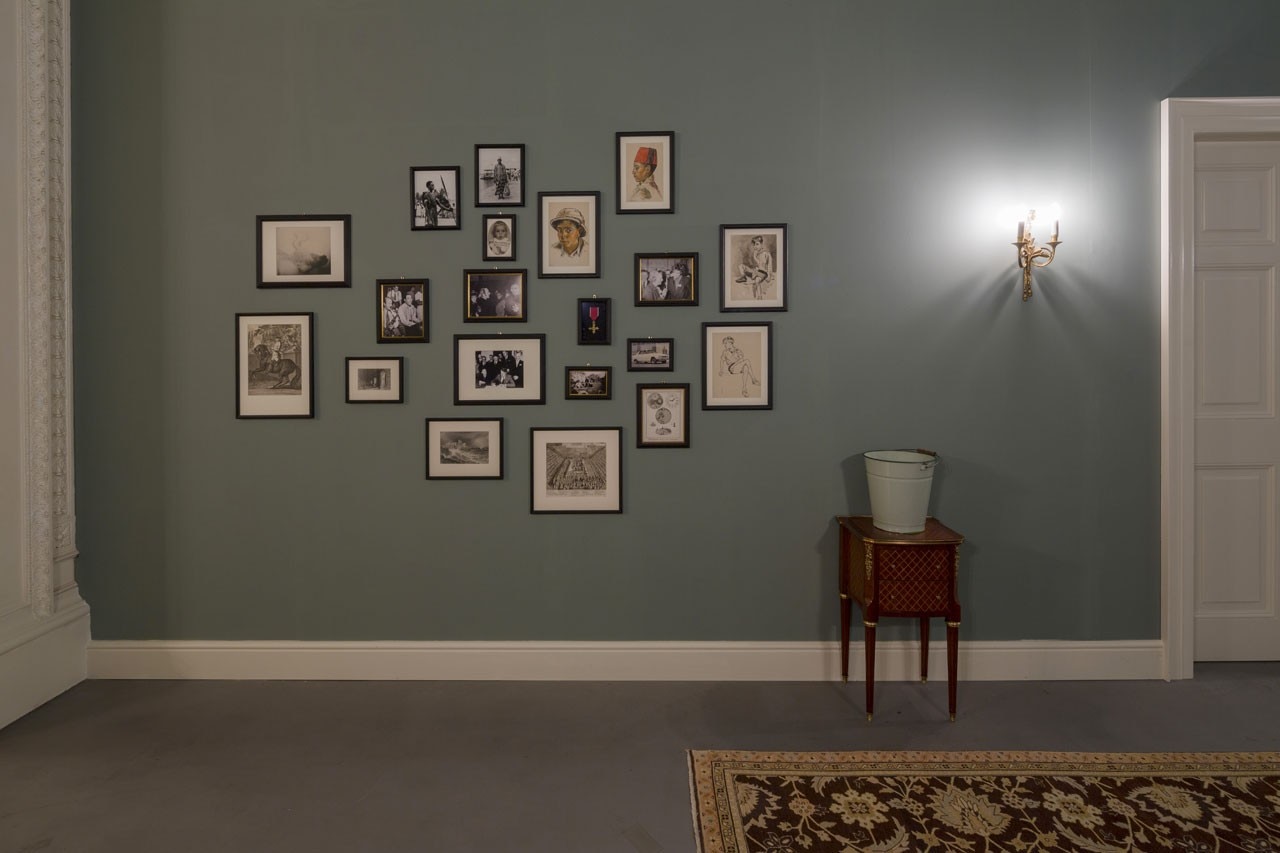
1 October 2013 – 2 January 2014
Elmgreen & Dragset: Tomorrow
Victoria & Albert Museum, London


